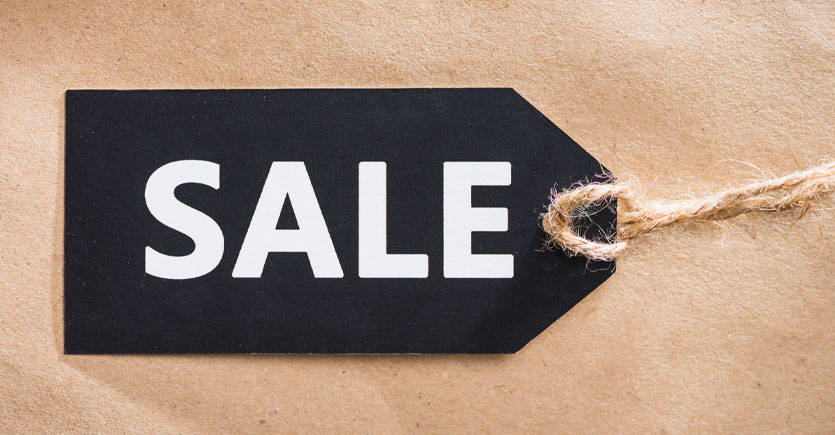Introduction
Promotions are a powerful tool in any business’s marketing arsenal. They drive customer engagement, increase sales, and build brand loyalty. By offering incentives, creating excitement, and adding value, promotions can attract new customers and retain existing ones, ultimately boosting your bottom line.
Table of Contents
This blog will delve into the importance of promotions and how they can transform your business. We will begin by explaining various promotional strategies and their significance. Then, we will explore different types of promotions that you can implement to engage your customers. Finally, we will showcase real-world case studies of effective promotional campaigns to inspire your efforts.
The main goal of this blog is to provide you with an understanding of promotional strategies and how they can benefit your business. We aim to:
- Explain Various Promotional Strategies and Their Significance:
- Define what promotional strategies are and discuss their importance in marketing.
- Highlight the benefits of promotions, such as increased sales, enhanced brand visibility, and improved customer loyalty.
- Offer Practical Ideas for Implementing Promotions:
- Provide detailed descriptions of different promotions, including discounts, contests, giveaways, loyalty programs, and bundling.
- Offer actionable tips on how to plan and execute these promotions effectively.
By the end of this blog, you’ll clearly understand how to leverage promotions to engage your customers and grow your business. Whether you’re a small business owner looking for creative ways to attract new customers or an entrepreneur seeking to build brand loyalty, the insights and examples shared here will provide you with the knowledge and inspiration to get started.
Explanation of Promotional Strategies
Promotional strategies are marketing tactics designed to boost interest in a product or service, encourage customer engagement, and drive sales. These strategies involve offering incentives, discounts, or special offers to motivate customers to make a purchase. Promotions can take various forms, including limited-time discounts, contests, giveaways, loyalty programs, and product bundling.
The role of promotional strategies in marketing is multifaceted:
- Creating Urgency: Promotions often develop a sense of urgency, prompting customers to take immediate action. For example, limited-time offers or flash sales encourage customers to make a purchase quickly to take advantage of the deal before it expires.
- Attracting New Customers: Promotional activities can attract new customers who may be enticed by a special offer or a chance to win a prize. This initial interaction can lead to future purchases and long-term customer relationships.
- Retaining Existing Customers: Regular promotions can keep existing customers engaged and loyal. By offering exclusive deals to repeat customers or rewarding them through loyalty programs, businesses can foster a sense of appreciation and encourage continued patronage.
Goals of Promotional Strategies
- Increasing Sales and Revenue:
- Promotions directly impact sales by encouraging customers to make purchases they might otherwise delay or forgo. Discounted prices, buy-one-get-one offers, and special bundles can drive immediate sales spikes and boost overall revenue.
- Enhancing Brand Visibility and Awareness:
- Promotional activities often involve extensive marketing efforts, such as social media campaigns, email marketing, and advertisements. These efforts increase brand visibility and awareness, making more potential customers aware of your products and services. Well-executed promotions can enhance your brand’s reputation and reach.
- Encouraging Customer Loyalty and Repeat Business:
- Promotions can be tailored to reward repeat customers through loyalty programs or exclusive member discounts. By showing appreciation to loyal customers, businesses can strengthen customer relationships and encourage repeat business. This not only increases customer lifetime value but also promotes word-of-mouth referrals.
- Clearing Out Old Inventory:
- Promotional strategies are an effective way to clear out old or excess inventory. By offering discounts on older products, businesses can make room for new stock while generating revenue from items that might otherwise remain unsold. Clearance sales and end-of-season discounts are common tactics for achieving this goal.
When thoughtfully planned and executed, promotional strategies can benefit businesses of all sizes. They drive immediate sales and contribute to long-term growth by enhancing brand visibility, building customer loyalty, and efficiently managing inventory.
Different Types of Promotions
Promotions come in various forms, each with its own set of advantages. Here’s a detailed look at the most effective promotions you can implement to drive customer engagement and boost your business.
Discounts
Offering products or services at a reduced price is a classic and effective promotional strategy. Discounts can be applied in various ways, such as percentage off, dollar amount off, or through special pricing for a limited time.
Examples:
- Seasonal Sales: Offering discounts during specific seasons or holidays (e.g., Black Friday, Christmas, back-to-school).
- Flash Sales: Limited-time offers that create urgency and encourage quick purchases.
- Bulk Purchase Discounts: Providing discounts when customers buy in larger quantities.
Benefits:
- Attracts Price-Sensitive Customers: Discounts appeal to customers looking for a good deal, increasing the likelihood of purchase.
- Increases Sales Volume: Lower prices can lead to higher sales volume, moving more inventory and boosting revenue.
Contests
Contests are competitions where customers can participate to win prizes. They are a great way to engage customers and create excitement around your brand.
Examples:
- Social Media Contests: Ask customers to share a photo or a story related to your brand on social media for a chance to win.
- Photo Contests: Encouraging customers to submit photos using your product.
- Trivia Contests: Quizzes or trivia questions related to your industry or products.
Benefits:
- Engages Customers: Contests require active participation, which increases customer interaction with your brand.
- Increases Brand Interaction: Participants often share contest details with their networks, expanding your reach.
- Generates User-Generated Content: Contests that require submissions, like photos or videos, provide valuable content that you can use in future marketing efforts.
Giveaways
Giveaways involve providing free products or services to customers. They can be standalone promotions or tied to purchases (e.g., buy-one-get-one-free offers).
Examples:
- Free Samples: Offering small quantities of your product for free to let customers try before they buy.
- Buy-One-Get-One-Free (BOGO): Customers receive an additional product for free when they purchase another.
- Raffle Giveaways: Customers enter to win a prize by providing their contact information or making a purchase.
Benefits:
- Attracts New Customers: Free products lower the barrier to trying your brand, attracting new customers.
- Builds Goodwill: Giving away products can create positive associations with your brand.
- Promotes Product Trials: Customers who try and like a free sample are more likely to make a purchase.
Loyalty Programs
Loyalty programs reward repeat customers with points, discounts, or exclusive offers. These programs are designed to encourage repeat purchases and build long-term customer loyalty.
Examples:
- Points-Based Systems: Customers earn points for every purchase, which can be redeemed for discounts or free products.
- Tiered Rewards: Customers move up tiers based on their purchase history, receiving better rewards as they spend more.
- Membership Clubs: Exclusive clubs that offer members special discounts, early access to sales, or unique products.
Benefits:
- Encourages Repeat Purchases: Rewards incentivize customers to keep coming back.
- Builds Customer Loyalty: Consistent rewards foster a sense of loyalty and appreciation.
- Increases Customer Lifetime Value: Loyal customers spend more over time, boosting long-term revenue.
Bundling
Bundling involves offering multiple products or services together at a discounted price. This strategy encourages customers to buy more by providing a perceived greater value.
Examples:
- Package Deals: Combining several products into a package at a lower price than buying each item separately.
- Product Kits: Offering kits that include everything needed for a specific purpose or project.
- Service Bundles: Grouping related services at a reduced rate.
Benefits:
- Increases Average Order Value: Customers spend more when purchasing bundles than individual items.
- Promotes Complementary Products: Bundling can introduce customers to additional products they might not have considered.
- Enhances Customer Satisfaction: Customers perceive they are getting a better deal, increasing satisfaction and loyalty.
By incorporating these types of promotions into your marketing strategy, you can effectively engage customers, drive sales, and build a loyal customer base.
Conclusion
Now is the perfect time to implement creative promotional ideas in your business. Begin by evaluating your current promotional efforts and identifying areas where you can introduce new strategies. Consider starting with small-scale promotions to gauge their effectiveness and gradually expand based on the results you achieve.
Remember, the key to successful promotion is consistency and adaptation. Continuously monitor your campaigns, gather feedback, and refine your approach to maximize their impact. Promotions are not just about immediate sales; they are about building long-term customer relationships and fostering brand loyalty.
- The Importance of an Appendix in Your Business Plan - November 23, 2024
- Why Monthly Financial Statements Are Crucial for Business Success - November 20, 2024
- Utilizing Outside Consultants and Professionals: Enhancing Your Management Team - November 17, 2024






